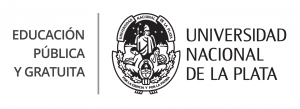Formulación y caracterización fisicoquímica de geles lácteos inducidos por agregado de calcio nutricionalmente enriquecidos con péptidos bioactivos
DOI:
https://doi.org/10.24215/30089336e005Palabras clave:
geles lácteos, hidrolizados enzimáticos, fisicoquímica, bioactividad, alimentos semi-sólidosResumen
El tratamiento térmico de la leche fortificada con calcio conduce a la formación de geles. Además, el aprovechamiento de las proteínas del lactosuero con fines nutricionales ha despertado atención, dado su elevado valor biológico y la comprobada presencia de péptidos con actividad bioactiva. En este trabajo, se propone la obtención de geles a base de leche (con agregado de calcio) y de concentrado de proteínas de suero lácteo (WPC) o de hidrolizados enzimáticos de concentrado proteico de suero lácteo (WPH). Se formularon geles partiendo de dispersiones de leche al 30% m/m a la cual se le adicionaron sales de calcio (90 mmol/kg) y WPC o WPH (0.1-3% m/m). Luego, se indujo la gelificación mediante un tratamiento térmico a 80 ºC durante 15 minutos. Se obtuvieron formulaciones con textura homogénea, sin presencia de grumos ni separación de fases. Asimismo, estos geles presentaron propiedades fisicoquímicas (sinéresis, capacidad de retención de agua e hidratación) y reológicas (viscosidad) adecuadas y con capacidades antioxidante, antihipertensiva y para retener calcio. Específicamente, se concluyó que los geles formulados con lactato de calcio y con 1% m/m de WPH podrían conformar la matriz base para distintos alimentos semi-sólidos como postres o productos untables salados.
Referencias
Acosta, N. B., Sihufe, G. A., Meza, B. E., Marino, F., Costabel, L. M., Zorrilla, S. E. y Olivares, M. L. (2020). Milk fortified with calcium: Changes in the physicochemical and rheological characteristics that affect the stability. LWT - Food Science and Technology, 134, 110204. https://doi.org/10.1016/j.lwt.2020.110204
Brighenti, M., Govindasamy-Lucey, S., Jaeggi, J. J., Johnson, M. E. y Lucey J. A. (2018). Effects of processing conditions on the texture and rheological properties of model acid gels and cream cheese. Journal of Dairy Science, 101, 6762-6775. https://doi.org/10.3168/jds.2018-14391
Chen, M., Ji, H., Zhang, Z., Zeng, X., Su, W. y Liu, S. (2019). A novel calcium-chelating peptide purified from Auxis thazard protein hydrolysate and its binding properties with calcium. Journal of Functional Foods, 60, 103447. https://doi.org/10.1016/j.jff.2019.103447
Cian, R. E., Luggren, P. y Drago, S. R. (2011). Effect of extrusion process on antioxidant and ACE inhibition properties from bovine hemoglobin concentrate hydrolysates incorporated into expanded maize products. International Journal of Food Sciences and Nutrition, 62(7), 774-780. https://doi.org/10.3109/09637486.2011.582034
Dullius, A., Goettert, M. I. y de Souza, C. F. V. (2018). Whey protein hydrolysates as a source of bioactive peptides for functional foods Biotechnological facilitation of industrial scale-up. Journal of Functional Foods, 42, 58-74. https://doi.org/10.1016/j.jff.2017.12.063
Eberhardt, A., López, E., Ceruti, R., Marino, F., Mammarella, E. J., Manzo, R. M. y Sihufe, G. A. (2019). Influence of the degree of hydrolysis on the bioactive properties of whey proteins hydrolysates using Alcalase®. International Journal of Dairy Technology, 72(4), 573-584. https://doi.org/10.1111/1471-0307.12606
Eberhardt, A., Niizawa, I., López, E., Rossi, Y., Montenegro, M., Mammarella, E. J., Manzo, R. M. y Sihufe, G. A. (2025). Production of whey protein ingredients with improved bioactivity based on single and sequential enzymatic hydrolysis reactions. Systems Microbiology and Biomanufacturing, 5, 101-111. https://doi.org/10.1007/s43393-024-00318-z
Hayakari, M., Kondo, Y. e Izumi, H. (1978). A rapid and simple spectrophotometric assay of angiotensin-converting enzyme. Analytical Biochemistry, 84(2), 361-369. https://doi.org/10.1016/0003-2697(78)90053-2
Koutina, G., Christensen, M., Bakman M., Andersen, U. y Skibsted, L. H. (2016). Calcium induced skim-milk gelation during heating as affected by pH. Dairy Science & Technology, 96, 79-93. https://doi.org/10.1007/s13594-015-0240-7
Lawless, H. T., Rapacki, F., Horne, J., Hayes, A. y Wang, G. (2003). The taste of calcium chloride in mixtures with NaCl, sucrose and citric acid. Food Quality and Preference, 15, 83-89. https://doi.org/10.1016/S0950-3293(03)00099-5
Lewis, M. J. (2010). The measurement and significance of ionic calcium in milk - a review. International Journal of Dairy Technology, 64(1), 1-13. https://doi.org/10.1111/j.1471-0307.2010.00639.x
Lin, L., Wong, M., Deeth, H. C. y Oh, H. E. (2018). Calcium-induced skim milk gels using different calcium salts. Food Chemistry, 245, 97-103. https://doi.org/10.1016/j.foodchem.2017.10.081
Lombardi, J., Spelzini, D., Folmer Corrêa, A. P., Brandelli, A., Risso, P. y Boeris, V. (2016). Milk protein suspensions enriched with three essential minerals: physicochemical characterization and aggregation induced by a novel enzymatic pool. Colloids and Surfaces B: Biointerfaces, 140, 452-459. https://doi.org/10.1016/j.colsurfb.2015.12.052
Madureira, A. R., Tavares, T., Gomes, A. M. P., Pintado, M. E. y Malcata, F. X. (2010). Invited review: Physiological properties of bioactive peptides obtained from whey proteins. Journal of Dairy Science, 93(2), 437-455. https://doi.org/10.3168/jds.2009-2566
Olivares, M. L., Achkar, N. P. y Zorrilla, S. E. (2016). Rheological behavior of concentrated skim milk dispersions as affected by physicochemical conditions: change in pH and CaCl2 addition. Dairy Science & Technology, 96, 525-538. https://doi.org/10.1007/s13594-016-0287-0
Olivares, M. L., Costabel, L. M., Zorrilla, S. E. y Vicente, J. (2022). Calcium-induced skim milk gels: Effect of milk powder concentration and pH on tribo-rheological characteristics and gel physico-chemical properties. Food Hydrocolloids, 124, 107335. https://doi.org/10.1016/j.foodhyd.2021.107335
Ong, J. J., Steele, C. M. y Duizer, L. M. (2018). Challenges to assumptions regarding oral shear rate during oral processing and swallowing based on sensory testing with thickened liquids. Food Hydrocolloids, 84, 173-180. https://doi.org/10.1016/j.foodhyd.2018.05.043
Pérez Jiménez, J. y Saura Calixto, F. (2007). Metodología para la evaluación de capacidad antioxidante en frutas y 491 hortalizas [ponencia]. V Congreso Iberoamericano de Tecnología postcosecha y Agroexportaciones. Tecnología, calidad y seguridad hortofruticola. Universidad Politécnica de Cartagena. Cartagena, Colombia. https://doi.org/10.31428/10317/12259
Philippe, M., Gaucheron, F., Le Graet, Y., Michel, F. y Garem, A. (2003). Physicochemical characterization of calcium- supplemented skim milk. Lait, 83(1), 45-59. https://doi.org/10.1051/lait:2002049
Ramasubramanian, L., D’Arcy, B. R., Deeth, H. C. y Oh, H. E. (2014). The rheological properties of calcium-induced milk gels. Journal of Food Engineering, 130, 45-51. https://doi.org/10.1016/j.jfoodeng.2014.01.020
Re, R., Pellegrini, N., Proteggente, A., Pannala, A., Yang, M. y Rice-Evans, C. (1999). Antioxidant activity applying an improved ABTS radical cation decolorization assay. Free Radical Biology and Medicine, 26(9-10), 1231-1237. https://doi.org/10.1016/S0891-5849(98)00315-3
Rodríguez-Rivera, A. J. (2017). Propiedades físico-químicas de un postre congelado elaborado con aislado de suero de leche [Tesis de doctorado, Universidad de Puerto Rico]. https://hdl.handle.net/20.500.11801/1552
Sinha, R., Radha, C., Prakash, J. y Kaul, P. (2007). Whey protein hydrolysate: functional properties, nutritional quality and utilization in beverage formulation. Food Chemistry, 101(4), 1484-1491. https://doi.org/10.1016/j.foodchem.2006.04.021
Tarapata, J., Smoczynski, M., Maciejczyk, M. y Zulewska, J. (2020). Effect of calcium chloride addition on properties of acid-rennet gels. International Dairy Journal, 106, 104-707. https://doi.org/10.1016/j.idairyj.2020.104707
Tárrega, A., Durán, L. y Costell, E. (2004). Flow behaviour of semi-solid dairy desserts. Effect of temperature. International Dairy Journal, 14(4), 345-353. https://doi.org/10.1016/j.idairyj.2003.12.004
Tárrega, A. y Costell, E. (2006). Effect of composition on the rheological behavior and sensory properties of semisolid dairy dessert. Food Hydrocolloids, 20(6), 914-922. https://doi.org/10.1016/j.foodhyd.2005.09.006
Vavrusova, M. y Skibsted, L. H. (2014). Calcium nutrition. Bioavailability and fortification. LWT - Food Science and Technology, 59(2), 1198-1204. https://doi.org/10.1016/j.lwt.2014.04.034
Wang, L., Ding, Y., Zhang, X., Li, Y., Wang, R., Luo, X., Li, Y., Li, J. y Chen, Z. (2018). Isolation of a novel calcium-binding peptide from wheat germ protein hydrolysates and the prediction for its mechanism of combination. Food Chemistry, 239, 416-426. https://doi.org/10.1016/j.foodchem.2017.06.090
Wasserman, R. H. (2004). Vitamin D and the Dual Processes of Intestinal Calcium Absorption. Journal of Nutrition, 134(11), 3137-3139. https://doi.org/10.1093/jn/134.11.3137
Ye, R. y Harte, F. (2013). Casein maps: Effect of ethanol, pH, temperature, and CaCl2 on the particle size of reconstituted casein micelles. Journal of Dairy Science, 96(2), 799-805. https://doi.org/10.3168/jds.2012-5838
Descargas
Publicado
Número
Sección
Licencia
Derechos de autor 2025 Lucía Lorena Satler, Guillermo Adrián Sihufe, María Laura Olivares

Esta obra está bajo una licencia internacional Creative Commons Atribución-NoComercial-CompartirIgual 4.0.
Acorde a estos términos, el material se puede compartir (copiar y redistribuir en cualquier medio o formato) y adaptar (remezclar, transformar y crear a partir del material otra obra), siempre que a) se cite la autoría y la fuente original de su publicación (revista y URL de la obra), b) no se use para fines comerciales y c) se mantengan los mismos términos de la licencia.


















